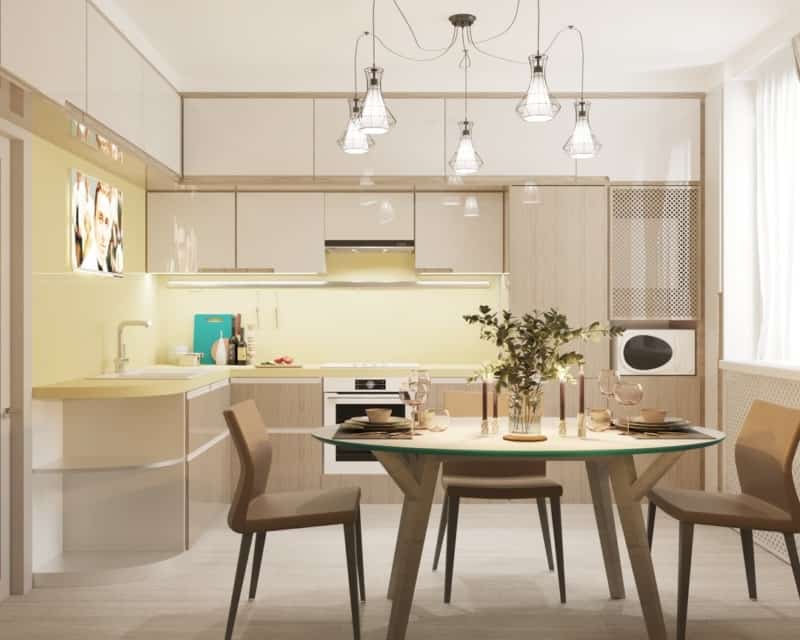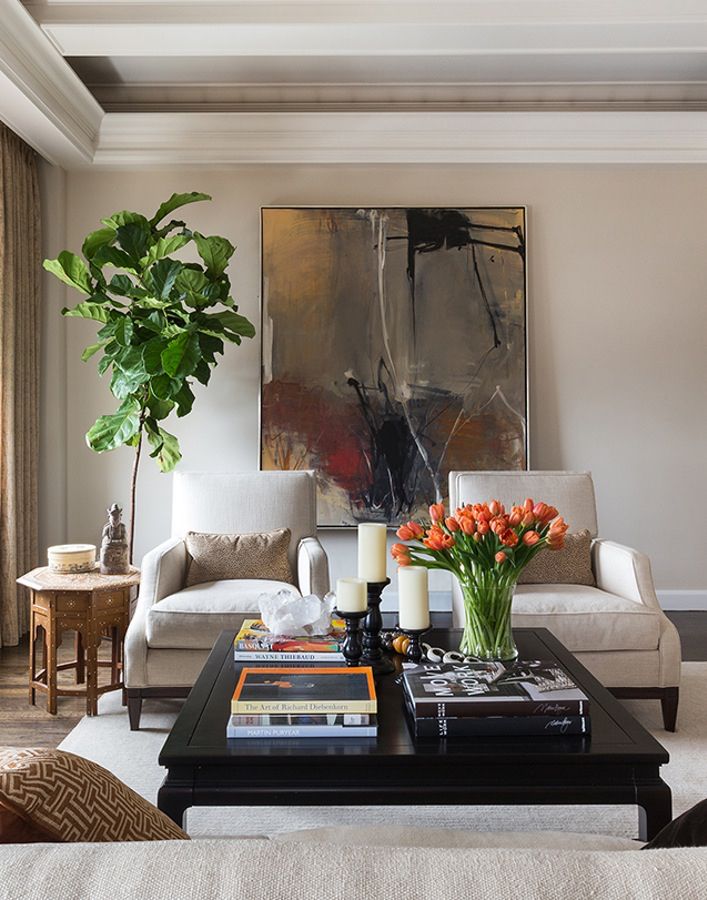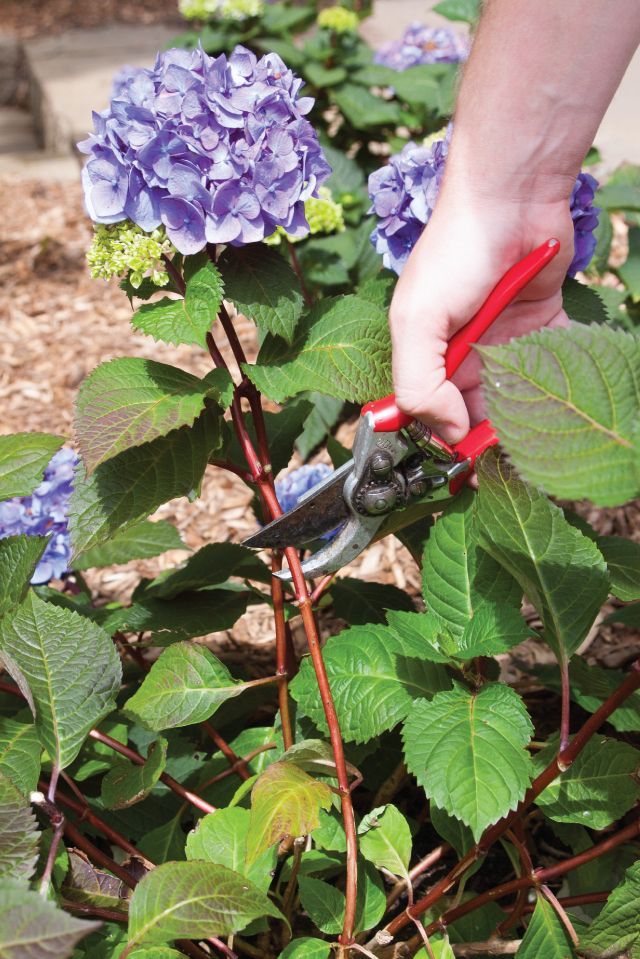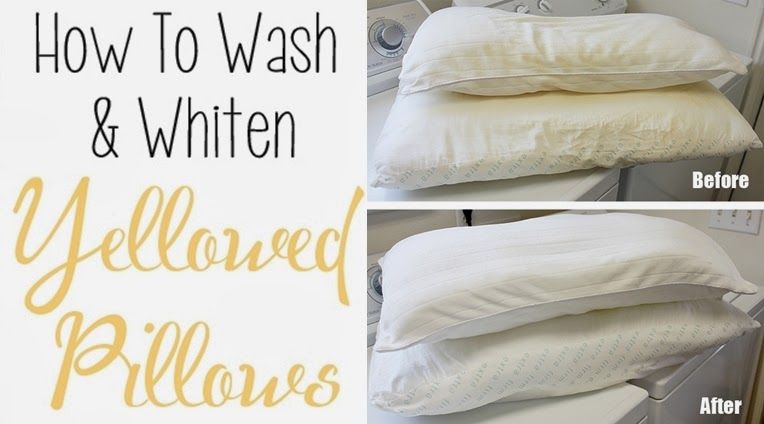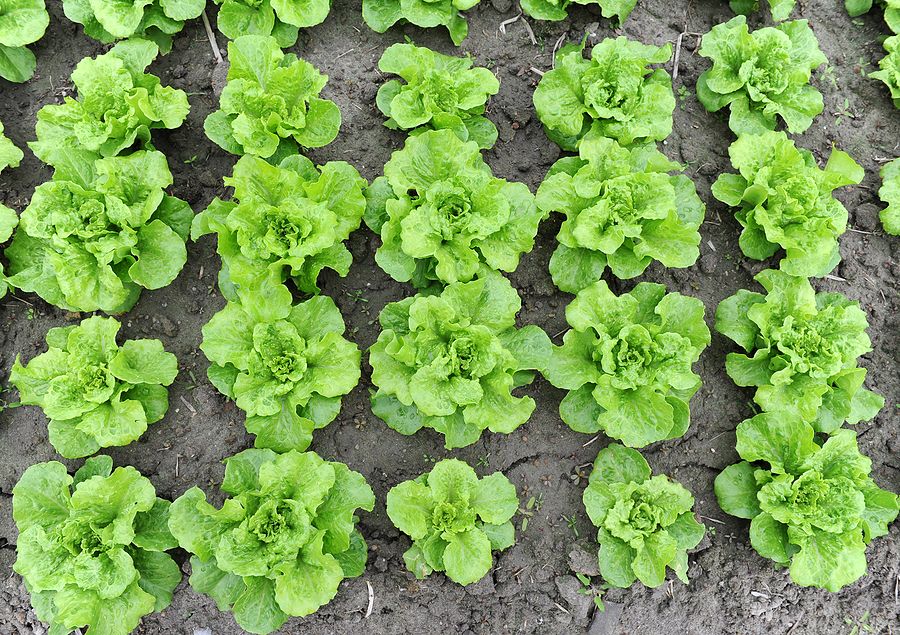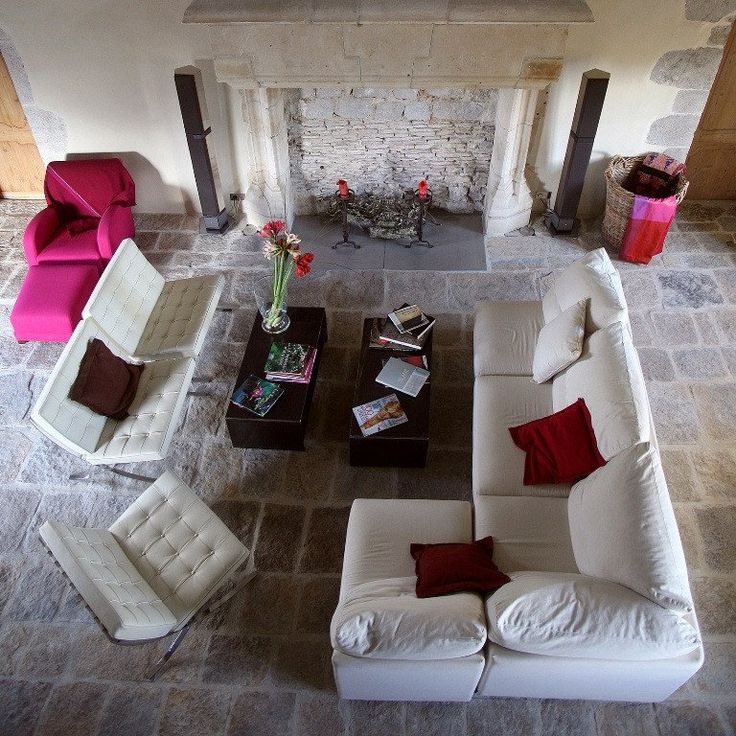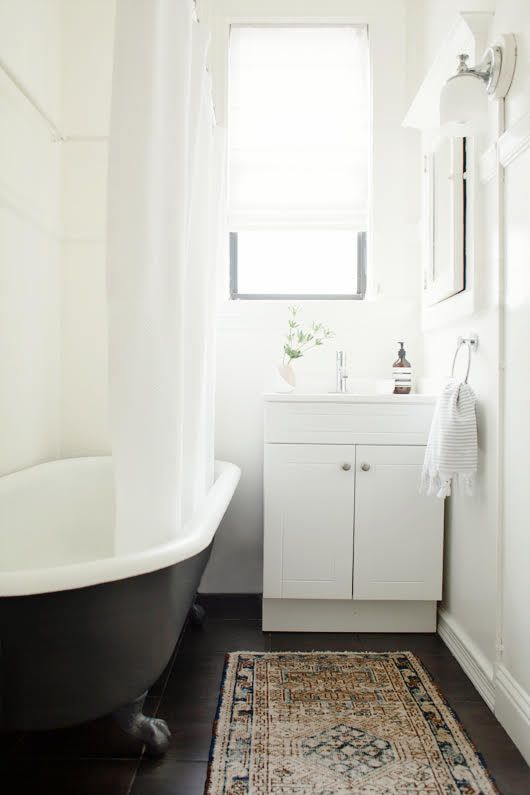Bathroom wall options
5 Best Bathroom Wall Options
Bathroom walls are different from walls in other parts of the home. In living rooms, bedrooms, hallways, and other completely dry areas, any type of wall covering will work. Even kitchens, which are mostly dry, can have almost any type of wall covering. Backsplashes protect key areas in kitchens to make this possible. But in bathrooms, water comes from all directions. Moisture, both from direct tub and shower overspray as well as moisture-laden air, is devastating for bathroom walls. Bathroom vent fans do help, but even well-vented bathrooms can have moisture issues.
Tip
Whatever wall covering option you're drawn to, make sure it fits into the overall style of the home before committing.
Bathroom Wall Surfaces Summary
| Surface | Pros | Cons |
| Vinyl wallpaper | Easy to install because it can be unpeeled and reapplied more than once | Some vinyl wallpaper is not suited for heavy moisture |
| Interior paint | Designated bathroom paint has mold- and mildew-inhibiting additives | If designated bathroom paint is chosen, it can cost up to twice as much as regular interior paint |
| Tile | Tile is 100-percent waterproof as long as it is expertly installed | Too much tile can overwhelm a room and make it feel sterile |
| Beadboard | Beadboard helps to protect walls against direct moisture from shower or bathtub | Beadboard's traditional look may not work for all bathroom styles |
| Tileboard | Tileboard can be a quick fix for bad drywall in a kitchen or bathroom | Medium density fiberboard (MDF) with a hard melamine layer on top is a poor substitute for real tile |
Vinyl Wallpaper
Vinyl-coated wallpaper is one of the better options for bathroom walls in terms of functionality (all-paper coverings will degrade in the moist environment). But if 100-percent vinyl wallpaper makes you think of a hotel, think again. Vinyl wallpaper has grown up and become sophisticated. Retailers such as Tempaper offer gorgeous vinyl wallpapers that have graced homes featured in style and shelter magazines.
Just be sure that your present wall surface can accept peelable vinyl wallpaper. Because it is less sticky than permanent wallpaper, peelable vinyl wallpaper will not stick to matte, flat, or rough surfaces. Also, vinyl wallpaper works best for indirect, ambient moisture. So use in conjunction with a surface that covers the lower section of the walls. There are, however, some vinyl wallpapers that will withstand direct contact from water, such as in a shower stall.
One benefit of vinyl wallpaper is that you can actually try it out before applying it. Buy a roll or a sample, then stick it up in the room. Large patterns will visually reduce the size of your bathroom. Verticals draw your eye upward and make the room feel taller. Horizontals seem to widen it.
Horizontals seem to widen it.
Semi-Gloss Bathroom or Regular Interior Paint
Bathroom paint is regular interior paint that has properties that make it better suited for bathrooms. With regular interior paint, the main thing to avoid is getting a flat or matte surface paint because the paint's pores trap water. A classic way to avoid this is to use semi-gloss or even a high gloss sheen; water beads up on these surfaces. But premium paints with mold-killing additives let you have those desirable flatter sheens in the bathroom.
The best thing about using paint for your bathroom walls is cost. Eggshell or semi-gloss interior paint is inexpensive. Even designated bathroom paint, which can cost up to twice the amount of regular acrylic-latex interior paint, is far cheaper than using wallpaper, tile, or other hard surfaces.
The Spruce / Michelle BeckerCeramic or Glass Tile
Ceramic tile is a classic choice for bathroom walls.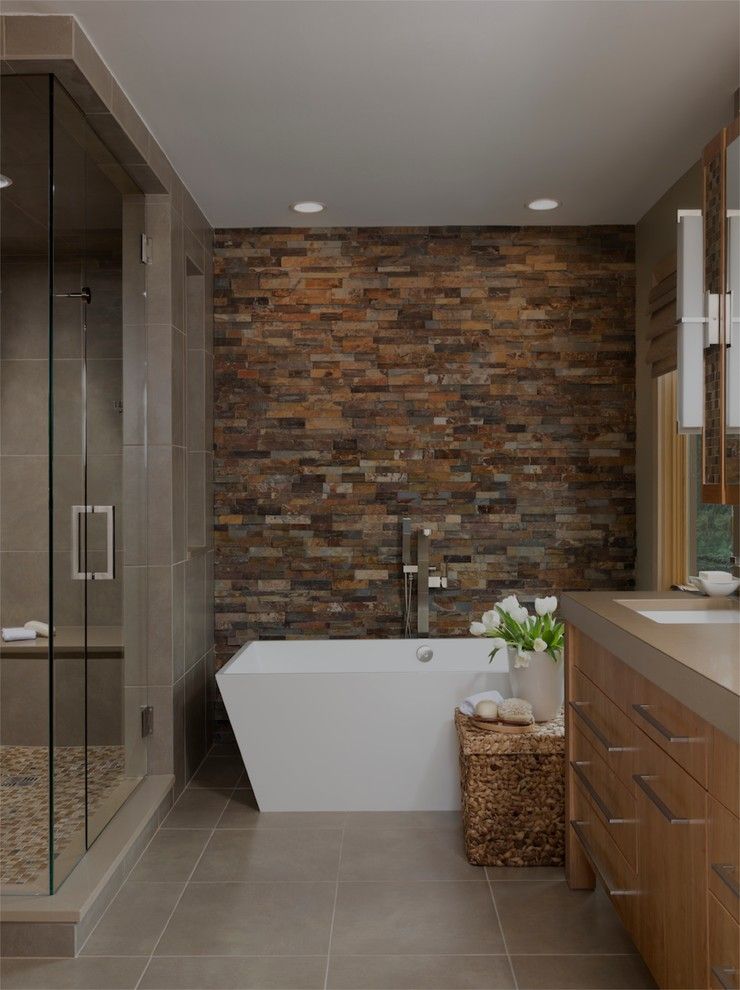 With tile, as long as it is properly applied, moisture will never be a problem. Since the days of the ancient Romans, tile has been used even for standing-water surfaces such as the insides of bathtubs and pools.
With tile, as long as it is properly applied, moisture will never be a problem. Since the days of the ancient Romans, tile has been used even for standing-water surfaces such as the insides of bathtubs and pools.
Design is your main consideration. All tile has grout, and grout means lines. Lines create patterns that can either enhance or detract from the bathroom's appearance. Too many tiles can make a room feel busy, ponderous, sterile, and even depressing. Partially tiling the wall is a good compromise. Ceramic tile used as wainscot usually stops at a certain point on the wall, around 36 inches is typical.
The Spruce / Adrienne LegaultBeadboard
Beadboard provides only partial coverage for the wall: the lower half. But the lower section is the most important part when it comes to moisture problems. Beadboard can be painted with semi-gloss or glossy paint, which thoroughly protects the lower parts of the walls against moisture.
For easier installation, purchase panels of beadboard that are eight feet long by four feet high.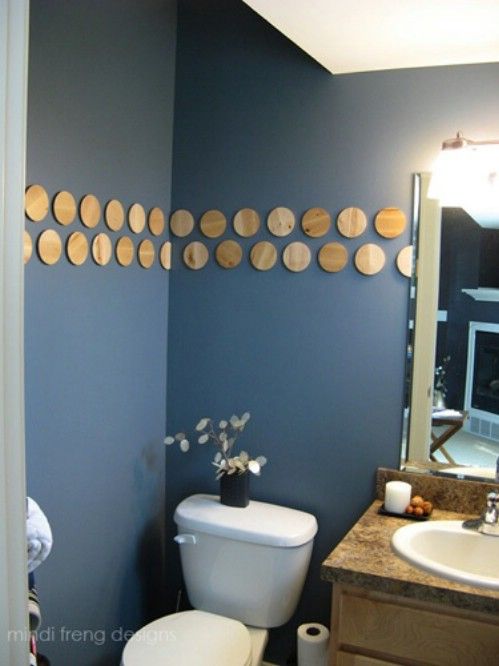 Installed lengthwise, these long boards lay down quickly with construction glue and finish nails. For a more refined and historically accurate look, choose individual beadboard planks.
Installed lengthwise, these long boards lay down quickly with construction glue and finish nails. For a more refined and historically accurate look, choose individual beadboard planks.
Beadboard gives your bathroom a classic look, which can be either an asset or a deficit. For traditionally styled bathrooms, beadboard fits right in. For modern bathrooms, beadboard is out of place and ungainly.
Brett Taylor / Getty ImagesTileboard
At first glance, tileboard looks like ceramic tile. Tileboard comes in large format panels that let you install 32 square feet of wall covering that looks nominally like tile in just a few minutes.
Better tileboard looks closer to real ceramic tile and the wear surface is coated, so it repels moisture. Cheap and easy to install, tileboard is best used for a guest bathroom or basement bathroom due to its economical appearance. Tileboard is a bargain material that fixes wall problems quickly but adds little long-term value to your home.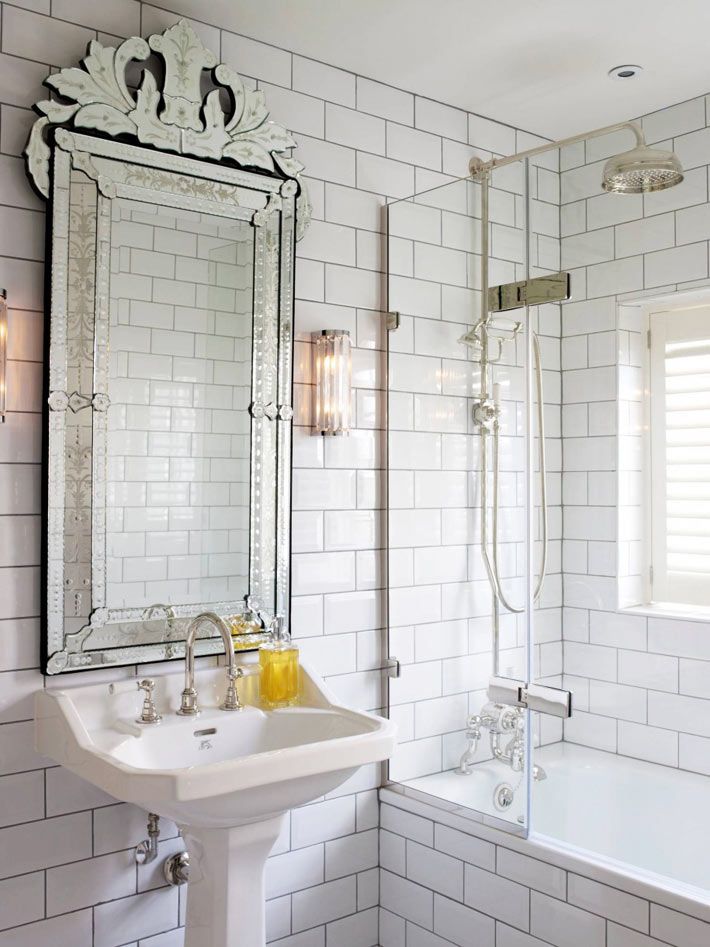
One downside to tileboard is that it rapidly swells up and will not recover its original dimensions if water reaches the back of it. One way to avoid this problem is to keep all seams and edges caulked with bathroom-grade silicone caulk.
The Spruce / Letícia AlmeidaWatch Now: This Paint Roller Instantly Gives You Custom Wallpaper
30 Beautiful Bathroom Wallpaper Ideas
By
Kristin Hohenadel
Kristin Hohenadel
Kristin Hohenadel is an interior design expert who has covered architecture, interiors, and decor trends for publications including the New York Times, Interior Design, Lonny, and the American and international editions of Elle Decor. She resides in Paris, France, and has traveled to over 30 countries, giving her a global perspective on home design.
Learn more about The Spruce's Editorial Process
Updated on 02/28/22
The Spruce / Christopher Lee Foto
Adding wallpaper is a low effort, high impact way to spruce up your bathroom.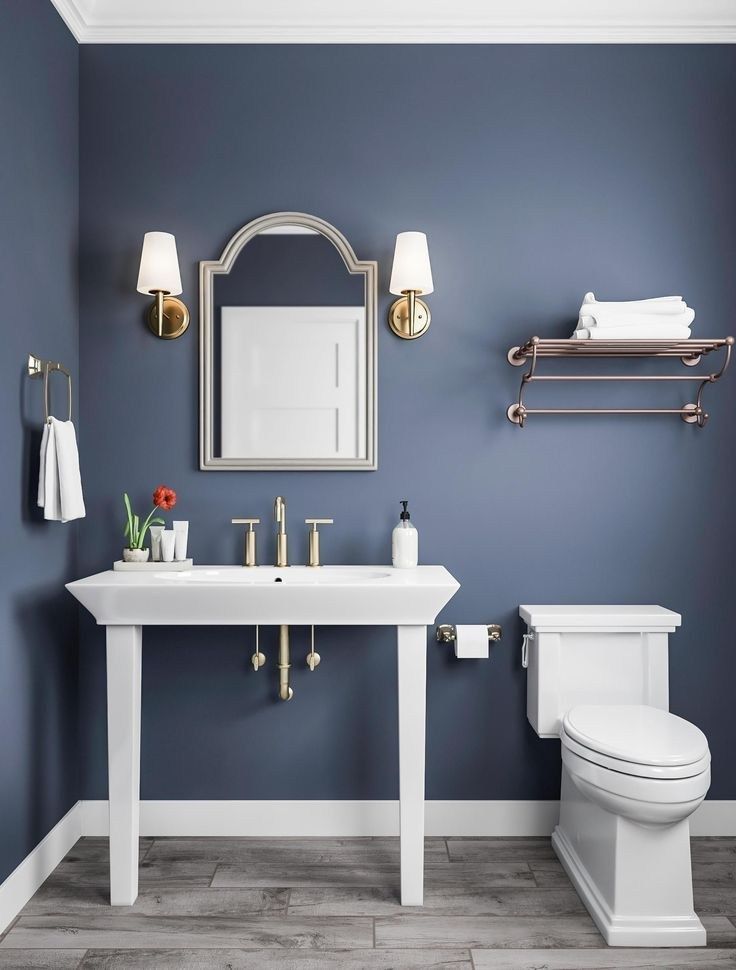 Whether you choose a graphic wallpaper accent, a subtle pattern to add texture, or cover every wall with a bold and colorful motif, bathroom wallpaper is the perfect finishing touch to instantly transform what can be a boring and utilitarian space. Check out these wallpapered bathrooms in every size and style to inspire your bathroom makeover.
Whether you choose a graphic wallpaper accent, a subtle pattern to add texture, or cover every wall with a bold and colorful motif, bathroom wallpaper is the perfect finishing touch to instantly transform what can be a boring and utilitarian space. Check out these wallpapered bathrooms in every size and style to inspire your bathroom makeover.
The Best Wallpapers to Use in Any Room in Your Home
-
01 of 30
Bold Floral
Design by Lisa Gilmore Design / Photo by Amy Lamb of Native House Photography
Interior designer Lisa Gilmore of Lisa Gilmore Design chose dramatic large-scale Dutch Masters-inspired floral wallpaper by Ellie Cash to turn this simple bathroom into an enchanted garden.
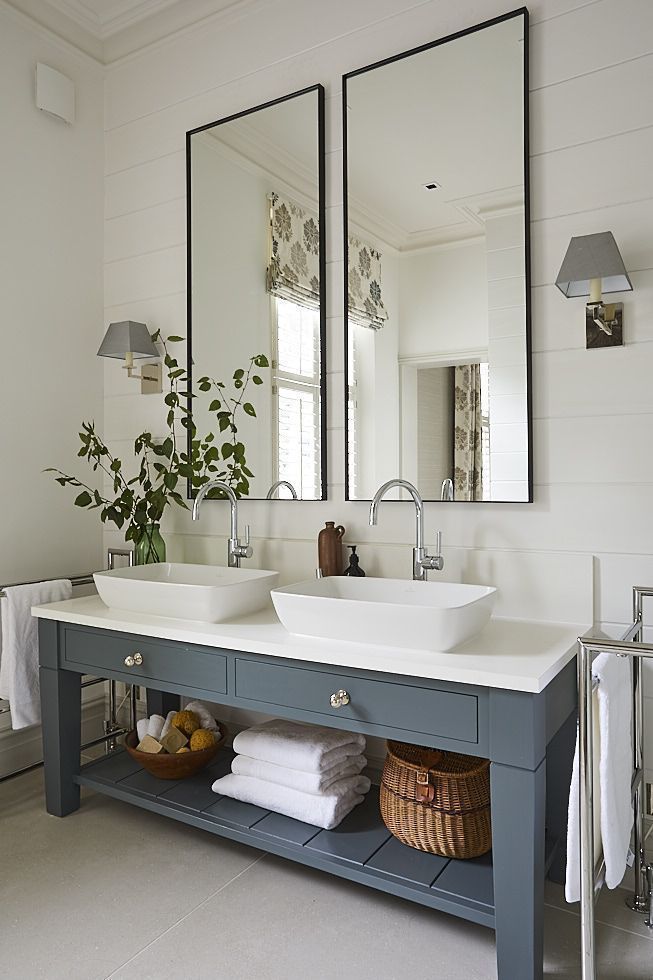 The dark tones of the wood vanity blend in well with the dark background of the wallpaper, while polished brass and fluted glass sconces add a bright note.
The dark tones of the wood vanity blend in well with the dark background of the wallpaper, while polished brass and fluted glass sconces add a bright note. -
02 of 30
Swan
Mary Patton Design
Interior designer Mary Patton of Mary Patton Design used soft gray wallpaper decorated with painted lily pads and swans that adds a sweet and lightly colorful tone to this classic cool-toned bathroom. A beveled mirror and a pair of wall sconces add a vintage note.
-
03 of 30
Storm Clouds
Design by Studio DB / Photo by Alexandra Rowley
The team at NYC-based interior design firm Studio DB used moody Fornasetti storm cloud wallpaper on the upper half of this clean-lined, neutral-toned bathroom to add movement and a note of drama.
-
04 of 30
Double Vintage
Design by Kara Mann
The black finely illustrated wallpaper in this bathroom from interior designer Kara Mann is the crowning touch that pulls together dark floors, simple frameless mirrors, and a pair of bright white vintage pedestal sinks to create a timeless and glamorous ambiance.

-
05 of 30
Colorful Kids
Design by Studio DB / Photo by Matthew Williams
Using wallpaper in a bathroom is one way to link it to the rest of the space, particularly if the bathroom is located at the end of a hallway or is visible from the main space. In this cheerful bathroom from interior design firm Studio DB, wallpaper with a paint splatter motif and a bright yellow painted sink vanity set the tone for a kid-friendly space.
-
06 of 30
Fishy
Design by Anne Rae Design / Photo by Jenny Siegwart
Interior designer Kristin Kostamo-McNeil of Anne Rae Design added a whimsical note to a simple bathroom with illustrated fish wallpaper in muted tones and a porthole mirror to add to the underwater illusion.
-
07 of 30
Sophisticated Floral
Design by Studio DB / Photo by Matthew Williams
In this striking bathroom, interior design firm Studio DB chose a sophisticated floral wallpaper with tones of red, blue, black, and cream that stands up to the black marble sink.

-
08 of 30
Birch Trees
JK Interior Living
Interior designer Julie Kantrowitz from NJ-based JK Interior Living chose classic Cole & Son birch tree wallpaper to add a calming woodsy note to this small cool-toned bathroom.
-
09 of 30
Delicate Floral
Design by Mindy Gayer Design Co. / Photo by Vanessa Lentine
For this sweet girls' bathroom, interior designer Mindy Gayer of Mindy Gayer Design Co. chose a delicate floral wallpaper pattern in shades of pink and green. The pastel pink vanity picks up on the wallpaper tones and softens the stark white bathroom and hexagonal floor tiles.
-
10 of 30
About Face
Design by House of One
Interior designer Brittany Farinas of House of One chose an in-your-face graphic pattern for this black and white bathroom that turns a simple room design into something surprising.
-
11 of 30
Palm Leaf
Mel Bean Interiors
Interior designer Mel Bean of Mel Bean Interiors chose nostalgic palm leaf wallpaper to perk up this simple bathroom.
 She painted the baseboards and crown molding in a teal tone taken from the wallpaper, and went all brass with fixtures, lighting, mirror, and accessories to add a warm tone and enough bling to stand up to the assertive pattern.
She painted the baseboards and crown molding in a teal tone taken from the wallpaper, and went all brass with fixtures, lighting, mirror, and accessories to add a warm tone and enough bling to stand up to the assertive pattern. -
12 of 30
Watercolor
Margaret Wright Photography
In this light-flooded bathroom from Margaret Wright Photography, watercolor blue and white flowered wallpaper in a large scale pattern creates a cheerful, calming ambiance.
-
13 of 30
Figurative
Design by Caitlin Higgins for Emily Henderson Design / Photo by Sara Ligorria-Tramp
One way to wake up a vintage bathroom is to install an audacious wallpaper pattern that creates a focal point and looks like it could have been there for decades. In this bathroom renovation by Caitlin Higgins for Emily Henderson Design, a graphic pattern of male and female torsos embellished with tones of dark pink and mustard is a witty take on classical art that creates an eccentric backdrop.

-
14 of 30
Gray and White
Desiree Burns Interiors
In this small polished bathroom, interior designer Desiree Burns of Desiree Burns Interiors chose boldly patterned, soft gray-and-white wallpaper, painting the door and ceiling in a matching shade of medium-toned gray, and adding gold-toned accessories and fixtures for contrast.
-
15 of 30
Wild
Margaret Wright Photography
In this eye-catching bathroom from Margaret Wright Photography, unapologetically bright pink wallpaper with a spiky floral motif stands up to the green tile shower to create a room full of personality and singular style.
What You Should Know Before Buying a Pedestal Sink
-
16 of 30
Graphic
Leclair Decor
The team at interior design firm Leclair Decor chose crisp graphic blue-and-white wallpaper and silver accents that adds energy to this simple white bathroom design.
-
17 of 30
Subtle Texture
Design by Mindy Gayer Design Co.
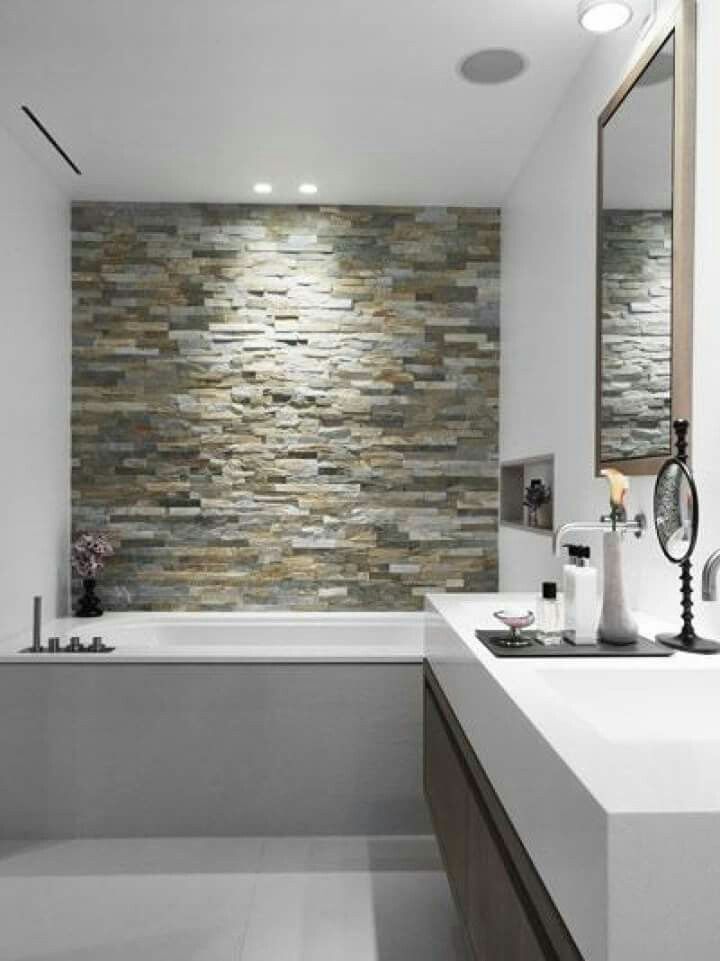 / Photo by Vanessa Lentine
/ Photo by Vanessa LentineInterior designer Mindy Gayer of Mindy Gayer Design Co. chose a subtle salmon pink and white wallpaper that creates a soft textural background for a small bathroom. Wood tones, mixed metals, wall art, and a vintage rug round out the laid back natural vibe.
-
18 of 30
Midcentury Mod
Brexton Cole Interiors
Interior designer Valerie Darden from Brexton Cole Interiors covered the walls of this bathroom with midcentury modern-inspired wavy wallpaper in black and white, keeping the rest of the design simple to leave the focus on the groovy pattern.
-
19 of 30
Fresh Green
Design by Kate Marker Interiors / Photo by Stoffer Photogrpahy
Interior designer Kate Marker of Kate Marker Interiors used green-and-white patterned wallpaper to add a fresh note to this small bathroom that works well with the white vintage-style sink and retro-style silver on the sink base, mirror, and accessories.
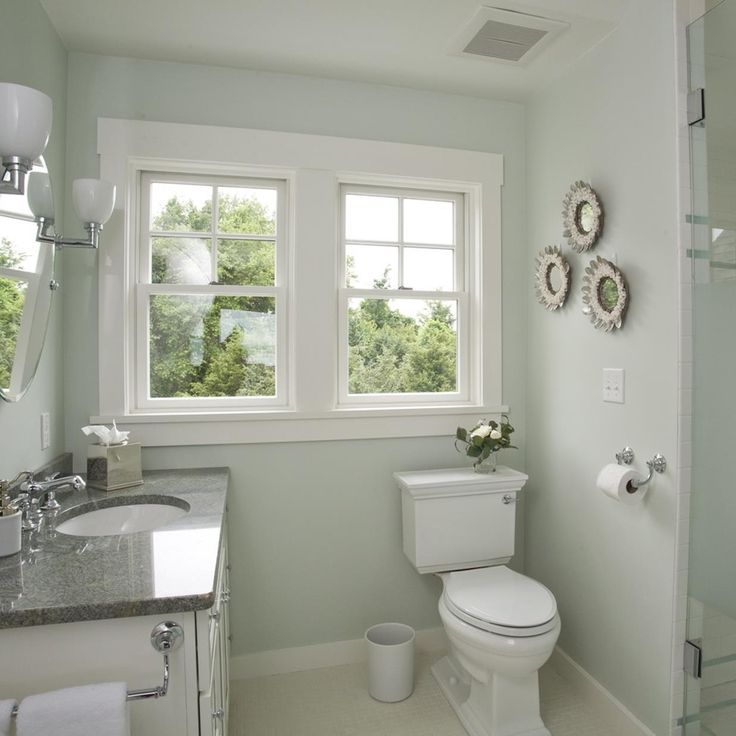
-
20 of 30
Woodland
Kate Marker Interiors
Interior designer Kate Marker of Kate Marker Interiors chose a dark wallpaper with a white illustrated woodland pattern to add charm to this Michigan rental cottage bathroom. A vintage mirror and free-standing marble sink complete the look.
-
21 of 30
Silver Tones
Charbonneau Interiors
Interior designer Nancy Charonneau of Charbonneau Interiors added interest to a simple white bathroom with graphic metallic wallpaper that plays off the silver tones of the room.
-
22 of 30
Green and Black
Design by Laquita Tate Interior Styling & Designs
Interior designer Laquita Tate from Memphis, TN-based Laquita Tate Interior Styling & Designs centered this bathroom design around a striking green and black wallpaper that transforms the space with color and pattern.
-
23 of 30
Formal Elegance
Design by Tyler Karu Design / Photo by Erin Little
The repeating circles in this teal-and-white wallpaper add rhythm and a shot of color to this spacious, cool neutral-toned bathroom from interior designer Tyler Karu of Tyler Karu Design.

-
24 of 30
Graphic
Twelve15 Design Studio
Interior designer Stephanie Asielue Beverly from Cincinnati-based Twelve15 Design Studio chose an immersive black wallpaper with a busy white hand-drawn motif that creates a sense of depth and movement.
-
25 of 30
Understated
Design by Cathie Hong Interiors / Photo by Margaret Austin Photo
In this bathroom from interior designer Cathie Hong of Cathie Hong Interiors, understated wallpaper in a graphic soft pink and white pattern adds a hint of texture and interest without overwhelming the small bathroom.
-
26 of 30
Black and White Floral
Ursula Carmona of Home Made by Carmona
Blogger Ursula Carmona of Home Made by Carmona chose a soft large scale black and white floral wallpaper for the top half of this guest bathroom that is visible from the hallway to make the room a feature rather than an end-of-the-hall eyesore.
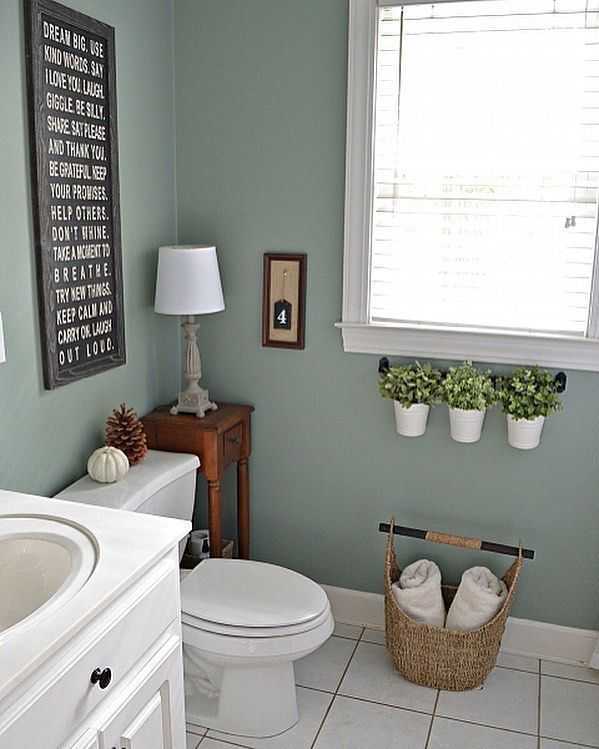
-
27 of 30
Blue and White
https://www.brittdesignstudio.com
Soft graphic wallpaper adds a finishing touch to this whimsical blue-and-white bathroom from the team at Britt Design Studio.
-
28 of 30
Coastal
Design by Tyler Karu Design / Photo by James R. Salomon
Interior designer Tyler Karu of Tyler Karu Design chose a soft gray wallpaper with an illustrated rope pattern to complement a weathered gray wood vanity, marble sink, and beveled round mirror in this Maine beach house bathroom.
-
29 of 30
Girly Metallic
Ursula Carmona of Home Made by Carmona
Blogger Ursula Carmona of Home Made by Carmona added a peel-and-stick gold metallic wallpaper accent wall in her daughters' shared bathroom to add a touch of glam.
-
30 of 30
Primary Colors
Design by JL Design / Photo by Reagen Taylor Photography
Interior designer Jessica Davis of JL Design used illustrated wallpaper with pops of blue, red, and yellow to add whimsy to this cute kids bathroom.
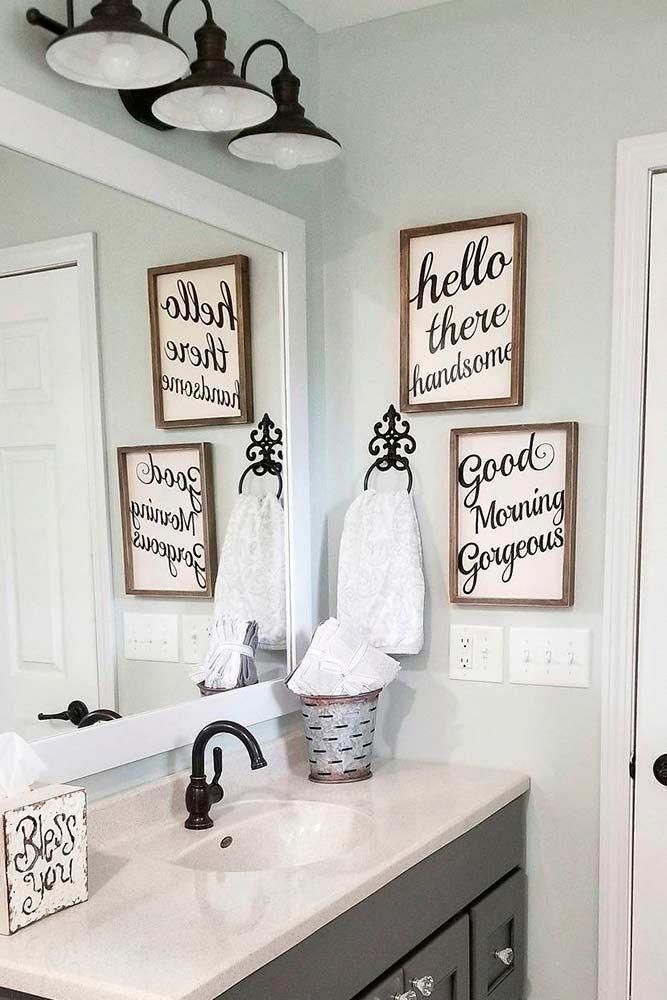
62 Bathroom Design Ideas You'll Want to Try
10 materials suitable for bathroom walls
Natalia | 01/25/2016 | Updated | Wall decoration, Finishing materials | 182,031 views | 1 comment
Contents of the article
When it comes to renovating a bathroom, the first thing many of us choose is wall decoration. Don't rush to settle for ceramic tiles - consider other possible materials. Wall decoration in this room should, of course, be moisture-resistant, durable, hygienic, easy to care for , resistant to a wide range of detergents, as well as resistant to temperature extremes. What materials can be used for wall decoration in the bathroom?
#1. Ceramic tiles
Let's start with , the most traditional variant of - ceramic tiles. It is this finish that adorns the vast majority of bathrooms today, and there are a lot of good reasons for this.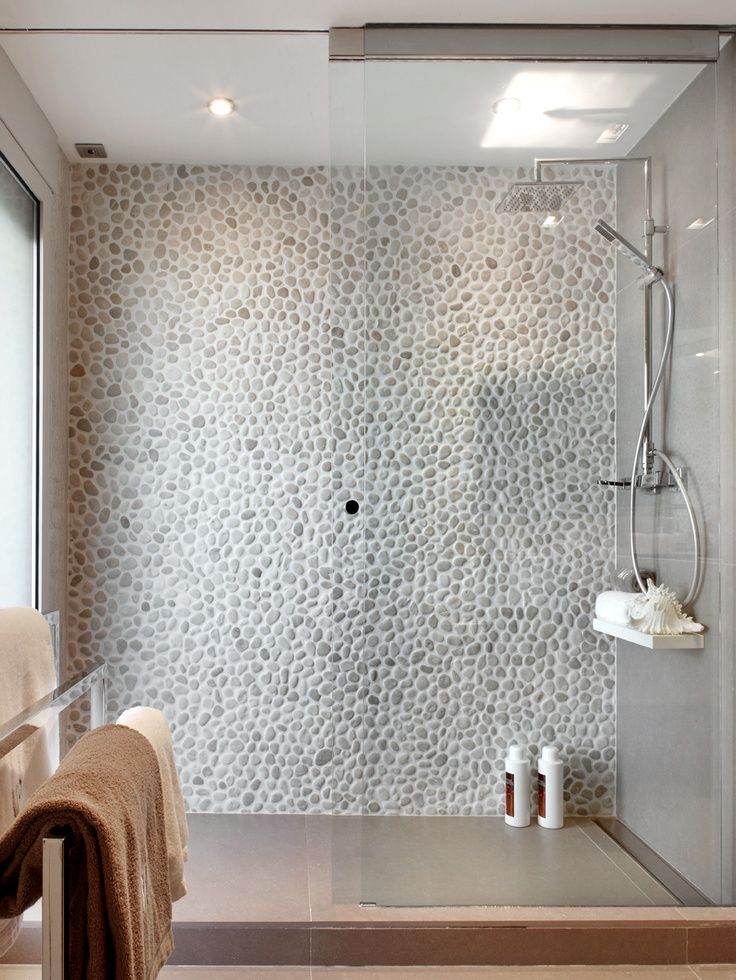 So, among the advantages of this finishing material can be noted:
So, among the advantages of this finishing material can be noted:
- incredible variety of different colors and sizes of tiles , which allows you to create absolutely any design with it: from baroque and classics to minimalism and hi-tech. The tile provides ample opportunities for creativity and imagination, because you can combine material of different colors, sizes, and even mirror tile fragments, getting original effects;
- ceramic tiles - absolutely moisture resistant material;
- maintainability : even if one tile is damaged, it can be replaced with another;
- hygienic and easy to care for , because the tile does not retain dirt on its smooth surface, and it is enough to wipe the material itself with a damp cloth or a solution of some kind of detergent so that it always remains clean;
- durability is one of the main advantages of ceramic tiles.
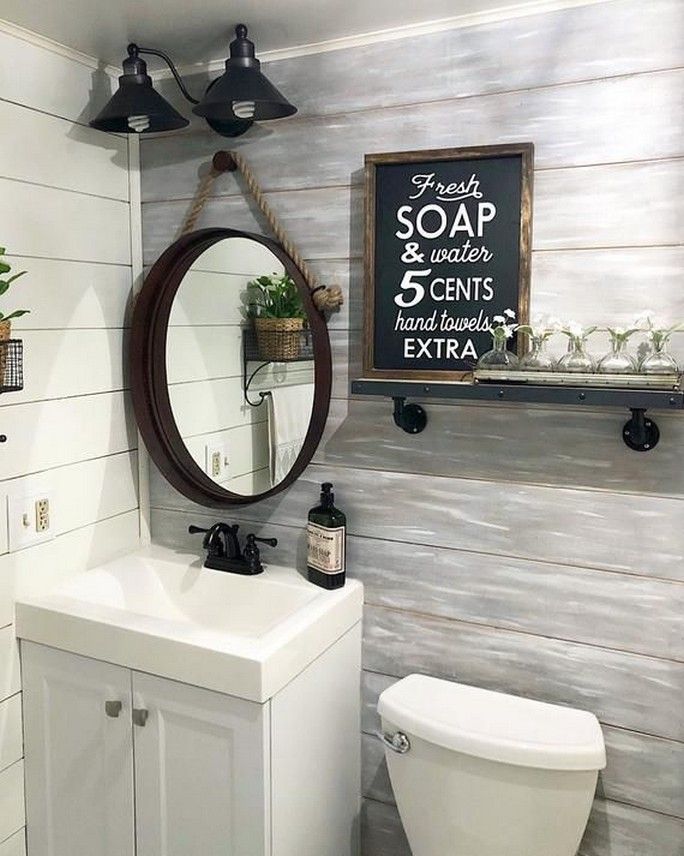 Even in the most difficult operating conditions, the tile will be able to hold out for quite a long time - about several decades.
Even in the most difficult operating conditions, the tile will be able to hold out for quite a long time - about several decades.
But there are also some disadvantages of :
- ceramic tiles cannot boast of the enormous mechanical strength of , so one careless blow can break the integrity of the tile;
- it is better to entrust the laying of ceramic tiles to a professional , which means that you will have to spend money not only on the materials themselves. The fact is that undertaking the installation of tiles without having the appropriate experience is a very dangerous undertaking, since there is a huge risk of spoiling all the material, and then starting all over again.
One of the types of ceramic tiles is mosaic . It has the same advantages as ordinary tiles, but at the same time allows you to create a more spectacular interior. Mosaic can be square, pentagonal, hexagonal, rhomboid in shape, vary in color and texture. The only disadvantage of this solution is its high price.
The only disadvantage of this solution is its high price.
#2. Painting
This is probably the cheapest and easiest way to finish the walls in the bathroom. However, it is worth remembering that not every paint is suitable for this room, because it is must be moisture resistant .
Which paints can be used for bathroom walls? The most reliable options include:
- acrylic water-based paints are inexpensive, suitable for use in rooms with high humidity;
- Latex Water-based Paint additionally forms a protective film when dry, which becomes another barrier to moisture;
- silicone paint is completely waterproof, so it is often used for painting facades, but its vapor barrier does not allow all walls in the bathroom to be finished with this material;
- chlorinated rubber is the most expensive and most resistant paint, it is used even in swimming pools.
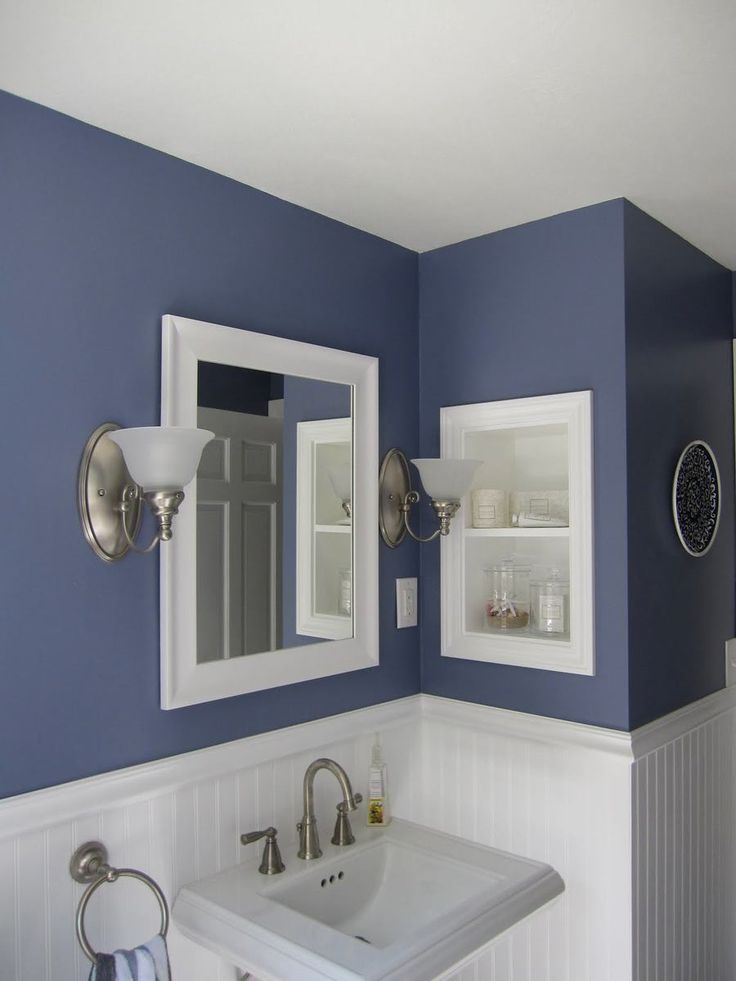
Despite the simplicity and cheapness of decorating the walls with bathroom paint, you need to know a few drawbacks of material.
- Firstly, , the walls require careful preparation: they should not have the slightest flaw, because after painting with a particularly matte paint they will be very striking.
- Secondly, , it is better not to use even moisture-resistant paint directly over water sources: near a sink or bathtub. In order for the repair to be durable, and the created interior to last for more than a year, it is better to combine the finishes.
#3. Plaster
Stucco is another option to create an unusual yet moisture-resistant finish in the bathroom. The advantages of this solution include:
- the ability to create a unique interior thanks to plaster, choose any pattern, use a stencil;
- Easy to apply.
There is also minus .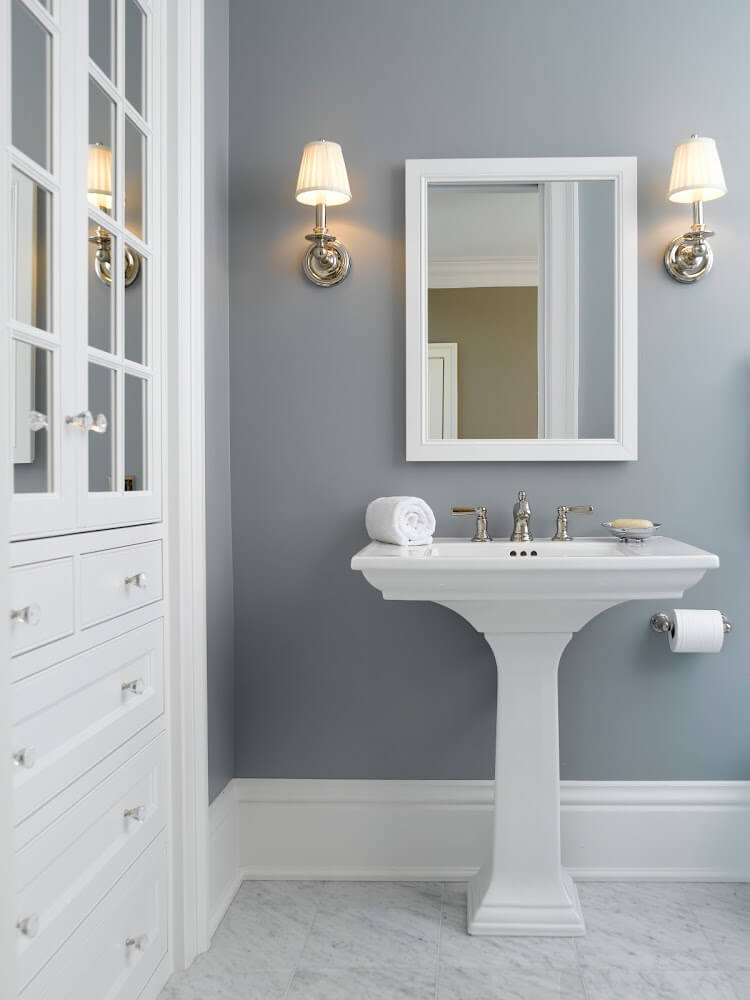 Some types of plasters are distinguished by a high price, and some will also require the involvement of craftsmen, but the result will definitely please you.
Some types of plasters are distinguished by a high price, and some will also require the involvement of craftsmen, but the result will definitely please you.
Naturally, not all plasters have the desired decorative and operational properties. Which material is suitable for finishing the bathroom?
- Restoring plaster , which has high strength characteristics, allows you to create a reliable waterproofing layer. It is easily applied to the surface, does not crack during operation, can absorb excess moisture, normalizing the microclimate in the room. However, designers still recommend not using such plaster for finishing, but pay attention to the following types;
- moisture-resistant decorative plasters , which allow creating a surface with a certain texture, pattern, relief, Venetian plasters;
- façade plasters are often used in bathrooms. They contain synthetic substances that allow you to withstand all the negative influences of the environment.
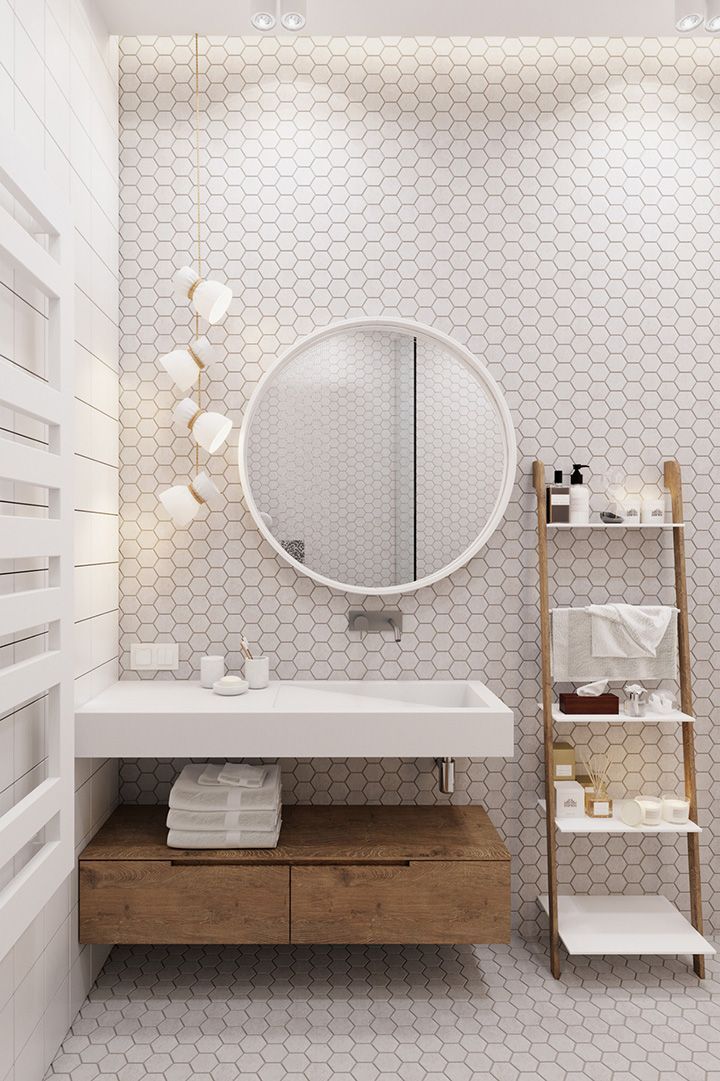 Such a coating will certainly withstand the effects of splashes from a bath or shower, and at the same time will please with a nice appearance.
Such a coating will certainly withstand the effects of splashes from a bath or shower, and at the same time will please with a nice appearance.
Do not forget about various decorative techniques. So, on the finished layer of plaster using a stencil, you can apply any pattern that will decorate the room and give it a certain style.
No. 4. Wallpaper
Many people are quite critical of the idea of decorating the walls in the bathroom with wallpaper. But if you choose the right material and use it correctly, you can achieve a stunning effect. Among the advantages of decorating the walls in the bathroom with wallpaper can be noted :
- the uniqueness of the created interior and a huge range of different colors;
- saving money and time, because tiling the same area will be more expensive and time consuming;
- high maintainability of wallpaper;
- is a great option for those who like to change the situation often, because with wallpaper it is very easy to change the interior.

Naturally, has its downsides:
- not all wallpapers are suitable for use in the bathroom. Moisture-resistant materials have a three-wave icon on the package - this is exactly what we need;
- wallpaper is not the most durable material and is very easy to damage;
- even the most durable and water-resistant wallpapers are not suitable for decorating places above the bathtub or in the shower. Here it is better to use a different material and try to skillfully combine different types of finishes.
For use in the bathroom, glass wallpaper, which is moisture resistant and can be painted, liquid wallpaper which does not form joints, as well as vinyl and acrylic wallpaper are excellent.
#5. Gypsum board
Gypsum board is rarely used in bathrooms today, but it can be a great option for those who have very uneven walls in the bathroom, and the process of leveling them requires a lot of time and money. Also, this option is useful for those who decided to create an interesting interior in the bathroom with the presence of original architectural forms.
Also, this option is useful for those who decided to create an interesting interior in the bathroom with the presence of original architectural forms.
The main advantages of gypsum board are:
- low price;
- light weight for easy installation;
- excellent performance, because drywall increases sound and heat insulation in the room.
You only need to choose a moisture-resistant drywall, and it is easy to recognize by the characteristic green color of the sheets. Among the disadvantages of such a finish are:
- the need to additionally decorate the created surface, since the green sheets of gypsum board look, to put it mildly, not very attractive;
- the need to use additional components for the installation of drywall, which increases the cost of construction.
#6.
Plastic PanelsAlthough not often used in bathrooms, plastic panels can boast a lot of positive qualities :
- is one of the most affordable options for bathroom decoration;
- panels are easy to install;
- can hide all communications and pipes;
- durability;
- resistance to temperature extremes;
- hygienic and moisture resistant;
- easy care;
- the ability to choose a material that imitates stone, wood or other surfaces.
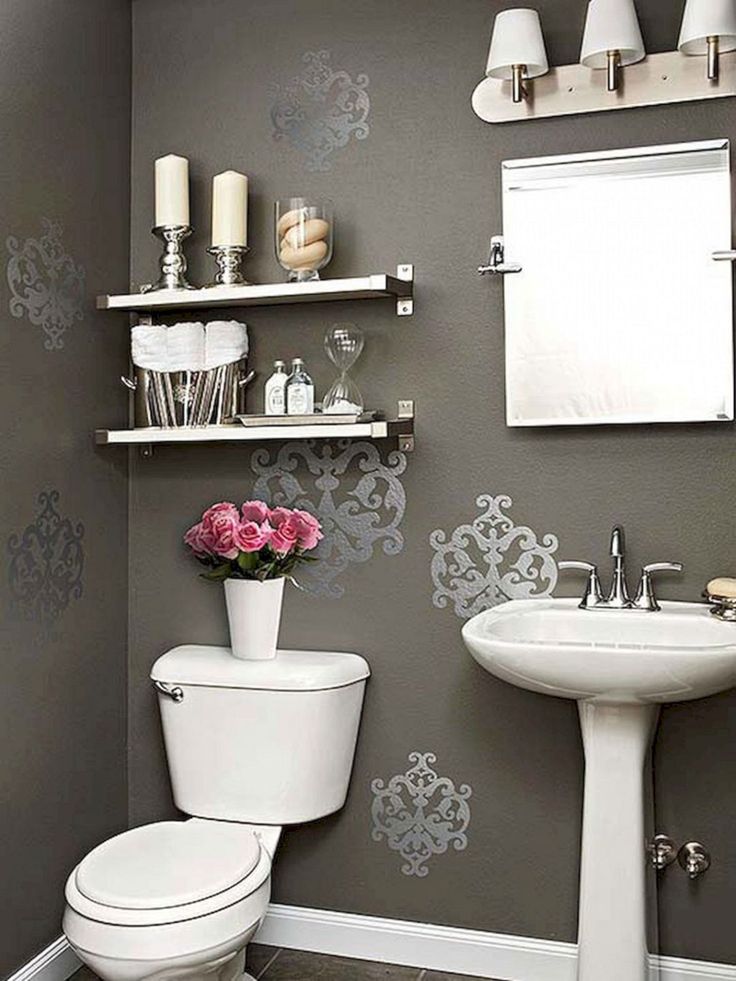
Nevertheless, it is worth considering some disadvantages of inherent in plastic panels:
- low mechanical strength;
- flammability;
- "condensate" that collects on the surface.
#7. Natural stone
This is one of the most expensive, but, no doubt, spectacular solutions. Often when decorating walls, it is marble that is used - this is one of the safest natural stones that does not accumulate high levels of radiation. In addition, marble has a low moisture absorption coefficient, and its porous structure allows the material to "breathe" and thereby regulate the microclimate in the room.
But a material such as marble has some drawbacks. Firstly, it is very expensive, secondly, it requires constant careful maintenance, and, thirdly, this material does not resist acid-containing products well, so maintenance is even more complicated. In addition, it is quite heavy material.
In addition to marble, limestone, sandstone, slate, granite and cobblestone are actively used for wall cladding.
#8. Artificial stone
Artificial stone has almost all the same advantages as natural stone, but without many of the disadvantages, making it an ideal finish for bathrooms and a serious competitor to conventional ceramic tiles. Among the main advantages of artificial stone it is worth noting:
- 's beautiful appearance and a huge range of material that can imitate any type of natural stone. A variety of colors, textures and sizes allows you to create a dream interior, choose the perfect material for the conditions of a particular room;
- high strength and mechanical resistance;
- absolute mold and mildew resistant ;
- durability;
- easy to install and maintain;
- hygiene and environmental safety;
- although this is not the cheapest way to finish the walls of the bathroom, but still, artificial stone will cost many times cheaper than natural , and its installation will be much easier due to its lower weight.

Artificial stone is great for bathrooms and can be used to finish even the wettest areas. The decorative stone also looks great when facing the shower, because in itself the appearance of flowing water over the stone is quite natural and natural. In general, artificial stone is a huge scope for imagination in the field of interior design, but it is necessary to veneer all the walls in the bathroom only with stone with special care so as not to turn the room into a dungeon or a castle. Often the stone is combined with other finishing materials.
#9. Self-adhesive film
Quite an interesting and unusual option for finishing the bathroom. The film is waterproof and the seams between the sheets are sealed with silicone sealant. The advantages of self-adhesive film include:
- very low cost;
- there is a sufficient choice of colors, so it will be possible to imitate the texture of wood, stone or any other material.
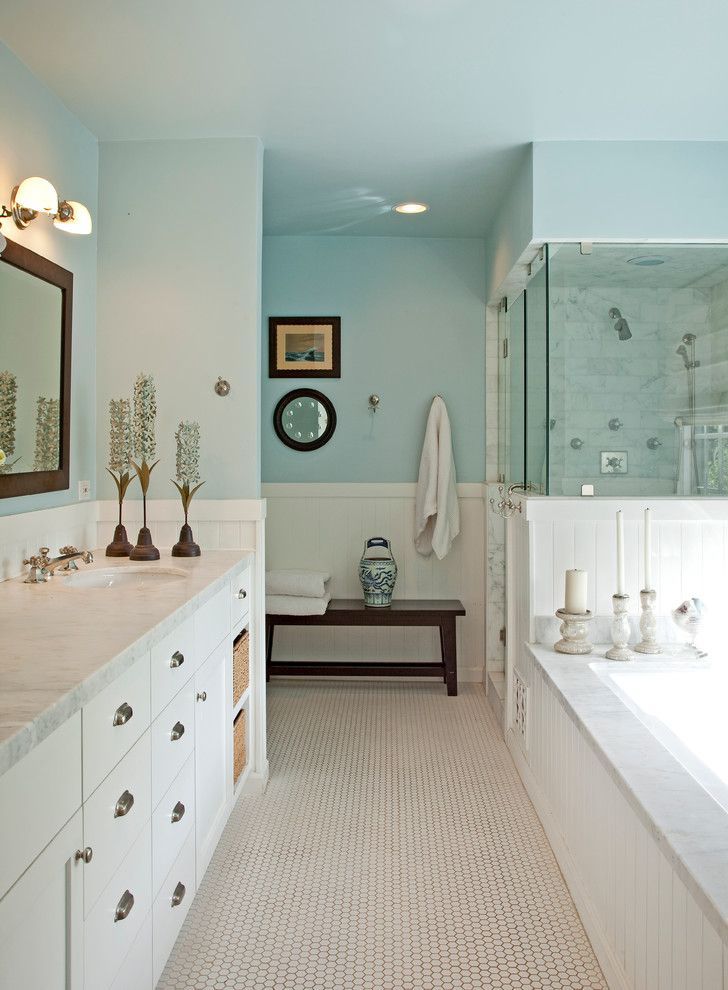 There are also films that are distinguished by a relief volumetric surface;
There are also films that are distinguished by a relief volumetric surface; - the material is easy to stick and easy to clean.
Naturally, was not without its drawbacks:
- looks like a cheap material. Even if from a distance the film may indeed resemble a stone or a tree, on closer examination it betrays its secret;
- low strength;
- film should not be used directly near water sources, but a different finish should be preferred over the bathtub and sink.
No. 10. Some unusual solutions
If you want to make the interior of the bathroom completely original, then you can take a closer look at these solutions:
- natural wood finish . We all know that it is very susceptible to moisture, so only material that has been carefully treated with agents that resist rot and mold should be used. The tree will require careful care and huge financial investments, but the bath will be environmentally friendly and as natural as possible;
- Linoleum for walls is rarely used in the bathroom.
 They make it only to order, which results in decent amounts, but the interior will be truly unique.
They make it only to order, which results in decent amounts, but the interior will be truly unique.
In conclusion
In pursuit of interesting interior solutions in the decoration of bathroom walls, do not forget about the practical side of the issue. The material must be strong and durable, moisture resistant and hygienic. If you really want to use some kind of original finish, then it is better to combine it with materials that have already proven themselves in such difficult conditions.
The article was written for remstroiblog.ru.
Tags:Bathroom
Wall decoration in the bathroom: a review of materials (+ photo)
Even the ancient Romans were sure that the place where a person washes should be special. They decorated their baths, as baths were called at that time, like luxurious palaces. Centuries have passed, but the attitude to the rooms for hygiene procedures has changed little. Every owner of a house or apartment wants to make his bathroom not only as functional as possible, but also beautiful.
In the process of developing a design project, it is important not only to choose the design and decor, but also to choose the right materials for wall decoration in the bathroom. Properly selected wall covering will last a very long time and will be able to maintain an attractive appearance.
Contents of the article:
- Requirements for finishing materials
- How can you finish the bathroom walls?
- Option #1 - ceramic tiles
- Option #2 - self-adhesive foil
- Option #3 - paint
- Option #4 - plastic panels
- Option #5 - decorative plaster
- Option #6 - mosaic
- Which do you prefer?
Requirements for finishing materials
There is an opinion that it is simply impossible to create an unusual and interesting interior in a bathroom. Especially if the room is small. Therefore, most often the owners listen to the recommendations of designers and decorate the bathroom in the same style as the rest of the apartment or house.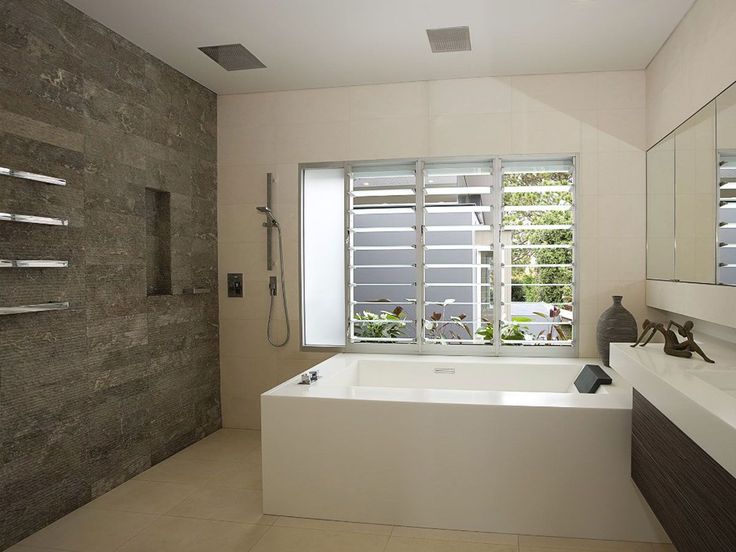 The result is often not the best.
The result is often not the best.
The place where a person performs hygiene procedures should be not only functional, but also beautiful
And this is not at all because some stylistic miscalculations are made. The bathroom requires a special approach. Here you can implement original ideas and experiments. Fenced off from the living space with an interior door, the room can be bright, original and stylish.
And above all, you need to think about finishing materials. It is not true that the best choice is ceramic tiles. There can be a lot of options. However, before proceeding with their choice, you need to understand that the bathroom is a room with special conditions, so all coatings used for finishing should be:
- resistant to significant temperature changes and high humidity;
- environmentally friendly;
- easy to clean and hygienic;
- durable.
The last requirement, at first glance, is not directly related to the special conditions of the bathroom.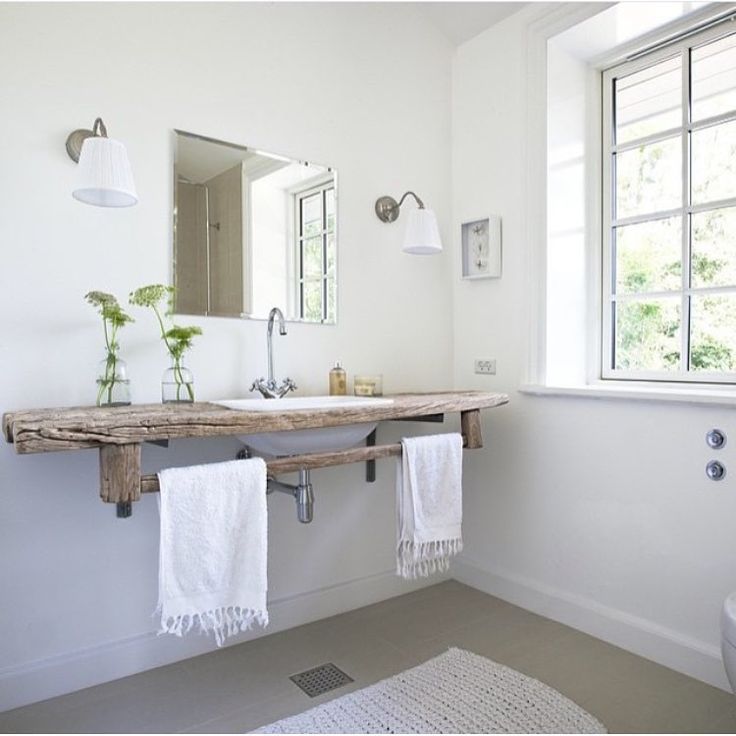 However, you need to understand that the repair in the bathroom is more complex and time-consuming than in any other room. Therefore, you should strive to make it as rare as possible.
However, you need to understand that the repair in the bathroom is more complex and time-consuming than in any other room. Therefore, you should strive to make it as rare as possible.
In addition, modern plumbing fixtures have a long service life, so they need the same durable frame.
How can I finish the bathroom walls?
There are a lot of options for finishing, for every taste and, of course, for every budget. Consider the advantages and disadvantages of several of them.
Option #1 - ceramic tile
This is the name of plates of various shapes and sizes, made of baked clay. Tiles are made by pressing a homogeneous crushed mixture and subsequent firing in ovens at a temperature of about 1200C. There are varieties of ceramics:
- Glazed tiles. Additionally, it is covered with a special transparent layer, which not only protects the ceramic plate, but also gives it a more attractive appearance.

- Unglazed veneer. The protective layer is missing. The tile is distinguished by the natural structure of the material and an attractive natural texture. It can be considered conditionally suitable for decorating wet rooms.
The design of ceramic tiles can be very different. In addition to the traditional square and rectangular cladding of various sizes, more interesting plate shapes are produced: hexagons, triangles, and even circles and ovals. The colors and textures of the tiles are also varied.
Interesting models with all kinds of inserts made of metal, mirror or stone. Manufacturers offer tile collections that include basic cladding and decor: borders and plates, decorated with various patterns and motifs.
The obvious advantages of ceramics include:
- high wear resistance;
- resistance to aggressive compounds, including detergents;
- environmental safety;
- high resistance to the damaging effects of moisture;
- hygiene and ease of care;
- maintainability, damaged tiles can be easily replaced;
- resistance to toxic substances and fire.

The main disadvantage of any ceramics can be considered the complexity of installation, before which it will be necessary to carry out laborious work to prepare the surface of the walls for cladding.
The manufacturer offers collections of ceramic tiles, in which the main cladding and decor are already selected. Using such a collection, even a non-professional can create an attractive design
The features of the finishing material are such that it can only be laid on a completely leveled, dry, primed base with a special compound. The cladding process is also complicated and requires the involvement of specialists. It is almost impossible for a person without experience to lay tiles on walls with high quality.
In addition, the ceramic surface is always cool to the touch, so leaning against such a wall is not very pleasant. The material belongs to the category of brittle and fragile, which complicates the transportation and laying of tiles. The cost of cladding depends on the quality and the manufacturer.
On sale you can find both elite models belonging to the high price category, as well as quite budget material. Thus, a cladding that is acceptable in terms of cost and quality, if desired, can be found without much difficulty.
Option #2 - self-adhesive film
Self-adhesive film is based on polyvinyl chloride. A decorative pattern is applied on the front side of the coating, on the opposite side there is a layer of glue that holds the material on the surface. It is covered with a protective layer of paper.
To apply the film on the wall, you need to very carefully and gradually remove the protective layer, while straightening and pressing the vinyl to the base. Such a film is perfectly fixed on plastic, wood, glass, plasterboard and metal surfaces.
Many types of self-adhesive film are available. On sale you can find a single-color coating, glossy or matte, mirror, with a 3D effect or metallized.
Films that imitate various materials are interesting: fabric, mosaic, tile, wood, cork, and the like. The advantages of vinyl film include:
The advantages of vinyl film include:
- high tensile and fracture strength;
- quick and easy installation;
- sufficiently high wear resistance, which allows the material to serve at least 5 years;
- large selection of colors and textures;
- resistance to high humidity;
- easy care, stains can be removed with soapy water;
- the pattern applied to the film does not fade for a long time and does not deteriorate from direct sunlight.
The disadvantages of the material can be considered sensitivity to direct exposure to high temperatures, which is why it is not recommended to glue it near hot objects. In addition, low-quality film may shrink or stretch.
Self-adhesive film available in a variety of designs. Using this material, you can quickly and inexpensively create an exclusive design for your bathroom.
The installation of the coating is extremely simple, but before starting it, it is necessary to prepare the base very well, since all, even the smallest cracks and irregularities, will be clearly visible.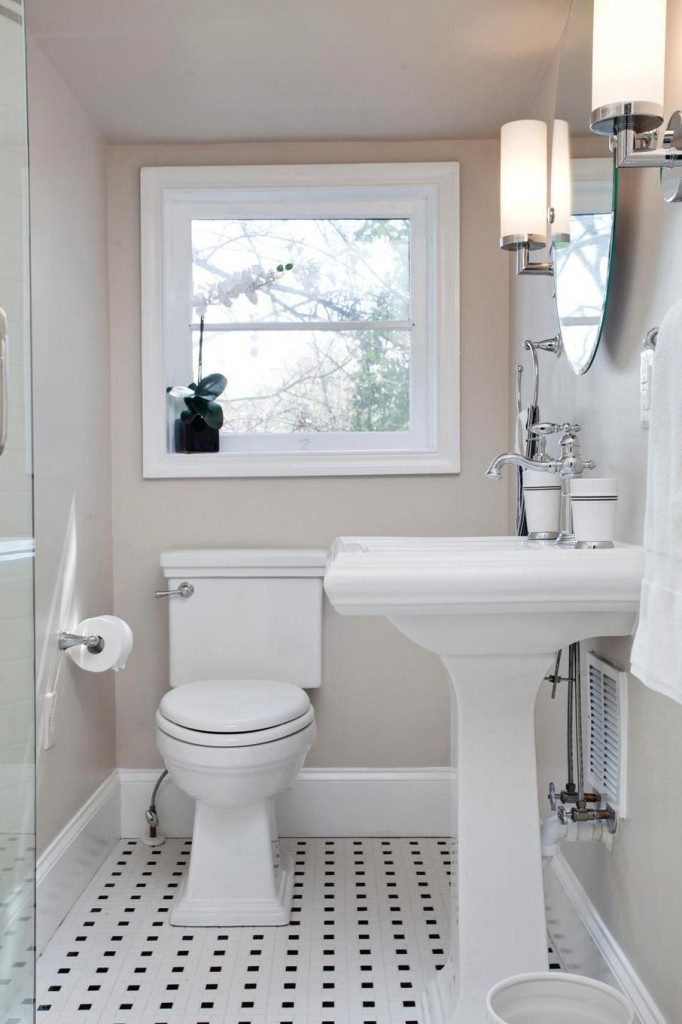
Option #3 - Paint
Painted bathroom walls are making a comeback with a variety of modern paint formulations. For painting, experts recommend using special paints:
- Acrylic . It is made on the basis of acrylic polymer, to which titanium dioxide and marble chips are added. The composition forms a durable film on the painted surface with microscopic pores, giving the walls the ability to "breathe".
- Latex . Its base is latex acrylate, which retains its original appearance for a long time. The composition withstands numerous wet cleanings using chemicals.
- Silicone . Combines the advantages of the previous options. Prevents growth of microorganisms and can be applied to any surface including brick, concrete slab and plaster. Not sensitive to temperature extremes and high humidity.
- Silicate . Its basis is liquid glass mixed with silicon and resin. To give the composition the desired color, oxides of various metals are added to it.
 Resistant to high humidity and temperature. Before applying to the wall, the base must be primed with a special solution.
Resistant to high humidity and temperature. Before applying to the wall, the base must be primed with a special solution.
The advantage of painting walls is the possibility of independent work, while their quality directly depends on the contractor. If desired, you can use various combinations of colors, which allows you to create an original interior design at low cost.
The disadvantages include the need for careful preparation of the substrate before painting.
Painted bathroom walls are a practical solution. For painting, we choose special compositions designed for rooms with high humidity
Option # 4 - plastic panels
Modern plastic panels are made of polyvinyl chloride, which is completely safe for human health. When choosing a material for finishing a bathroom, you need to consider that there are two types of such panels. One of them is designed for decorating the ceiling, and the second for the walls.
It is important to choose the right slats, because wall slats differ from ceiling slats in greater strength, resistance to mechanical damage, and less flexibility.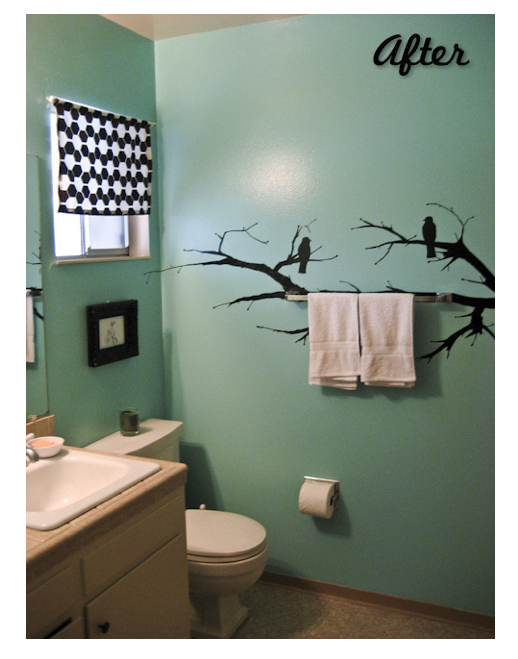 For the manufacture of wall panels, a composition with a high content of pvc is used. In addition, their internal stiffeners are made of plastic with a thickness of at least 1 mm. It will not be possible to cut such material with a knife.
For the manufacture of wall panels, a composition with a high content of pvc is used. In addition, their internal stiffeners are made of plastic with a thickness of at least 1 mm. It will not be possible to cut such material with a knife.
Laminate panels are best suited for wall decor. Their main difference from the rest is increased resistance to any mechanical damage. This effect is achieved through the use of a special protective film that protects the pattern from fading, and the surface of the product from scratches and chips. The advantages of PVC panels include:
- Low demands on the quality of the base. For the installation of lamellas, a prefabricated frame made of wood or metal is used. It can be assembled over any wall, no leveling, primer or putty required.
- Relative ease of installation. If desired, the master will be able to install the panels without much experience in construction work.
- Possibility to hide any engineering communications behind the slats.

- Maintainability. The panel that has become unusable can be easily removed and replaced with a new one.
- Easy care.
- Large selection of various textures and colors.
Among the shortcomings of plastic panels, it is worth noting less than that of a tile, resistance to mechanical damage, vapor permeability, which leads to the formation of condensate on the surface of the coating. In addition, the frame required for the installation of lamellas "eats" part of the useful area of the room.
For finishing the bathroom, it is best to choose laminated pvc panels, which have additional protection against mechanical damage
Option #5 - decorative plaster
A special mixture consisting of binder, filler and auxiliary components. The basis of plaster can be both natural and various synthetic substances.
A special relief of the treated surface appears due to the use of various fillers: natural stone chips, polymer granules, glass, cellulose fibers and others.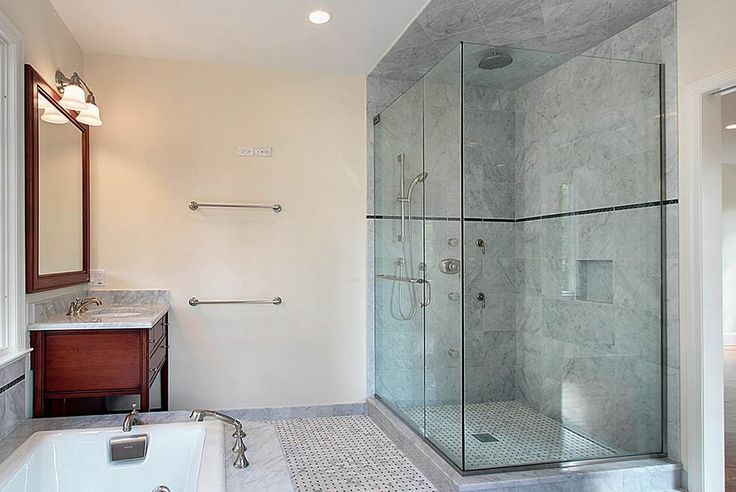 When choosing plaster for bathroom decor, it is important to choose a moisture-resistant solution.
When choosing plaster for bathroom decor, it is important to choose a moisture-resistant solution.
Experts recommend paying attention to the compositions intended for facade decoration, which are created using polymer, acrylic and epoxy resins. Decorative plaster has many advantages:
- Coverage of the entire surface to be decorated without seams and joints, which allows you to flawlessly decorate any part of the room in terms of complexity. For example, columns, arches, niches and shelves.
- Coating durability. It does not fade, does not wear out and does not fade.
- Easy care.
- A wide selection of all kinds of textures and the possibility of coloring the mixture, which allows you to choose the perfect material for decorating a bathroom of any style.
- No need for complex preparation of the base for applying decorative plaster. In some cases, only priming can be dispensed with.
- Good compatibility with any finishing materials.
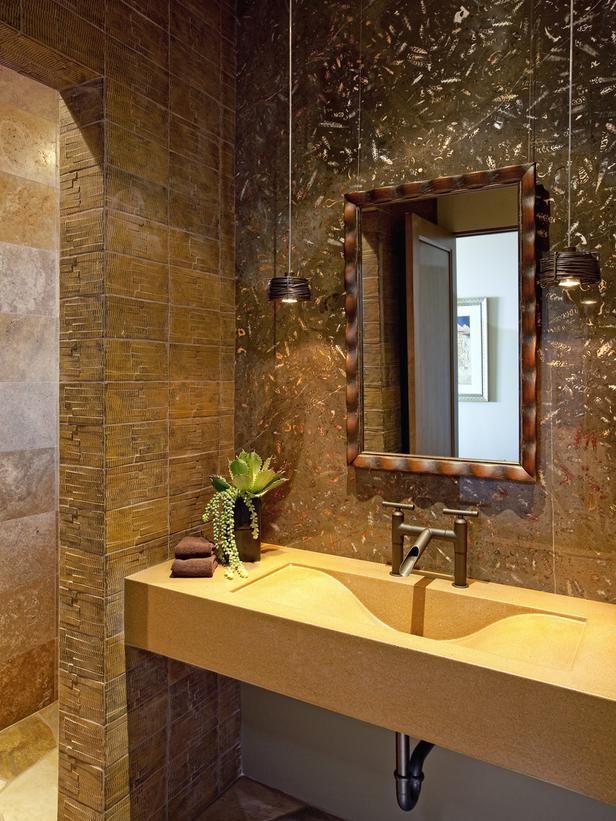
Significant disadvantages of decorative plaster include the risk of cracking if the house has not yet undergone shrinkage after completion of construction.
In addition, it is very important to choose the right composition, because there are fragile and moisture-sensitive types of material that will quickly become unusable in the bathroom. For insurance, you can apply a layer of protective varnish over the coating.
Decorative plaster is distinguished by a relief surface, which is created by the filler present in the solution - natural stone chips, cellulose fibers, plastic granules
Option # 6 - mosaic
Very beautiful coating, which consists of small pieces of stone, ceramics, glass, metal or smalt. The shape, color and size of the elements can be very different. A distinction is made between handmade mosaics and pre-coated plastic meshes.
In the first case, the installation process will be very laborious and time consuming. But as a result, the bathroom will acquire an exclusive design.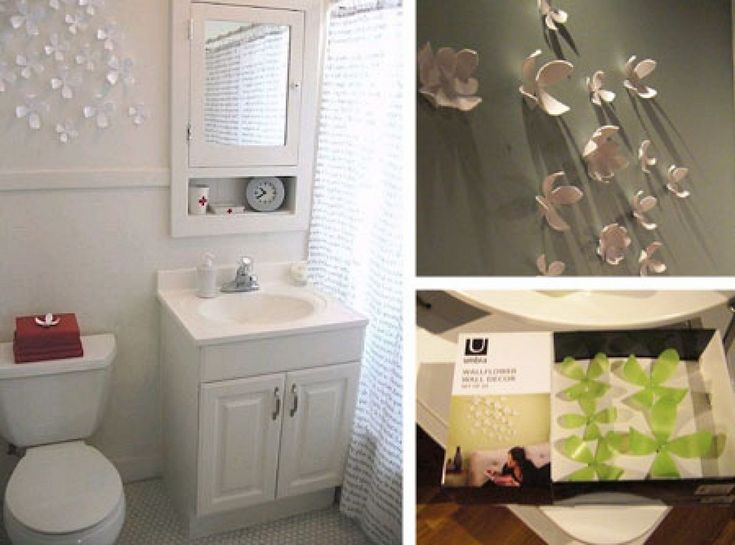 In the second case, the installation of the mosaic will not be too laborious and time consuming.
In the second case, the installation of the mosaic will not be too laborious and time consuming.
On sale you can find a mosaic on a plastic base, which is very easy to fix on the wall. Its installation does not require special skills, and the result is a beautiful and practical coating
Mosaic is usually not divided into wall and floor, so the same fragments can be laid on any surface. The design of the bathroom is very interesting, when the mosaic seems to “flow” from the wall to the floor. The advantages of mosaic coating include:
- Spectacular appearance. You can choose between multi-color and one-color patterns, simple and elaborate motifs.
- Hygiene. Fungi and mold rarely settle on glass, metal or ceramics. Dirt from such a coating is easy to remove as a result of wet cleaning.
- Resistant to high humidity and temperature extremes.
- High strength and durability.
- Lack of visible joints, the ability to decorate the most complex surfaces.


